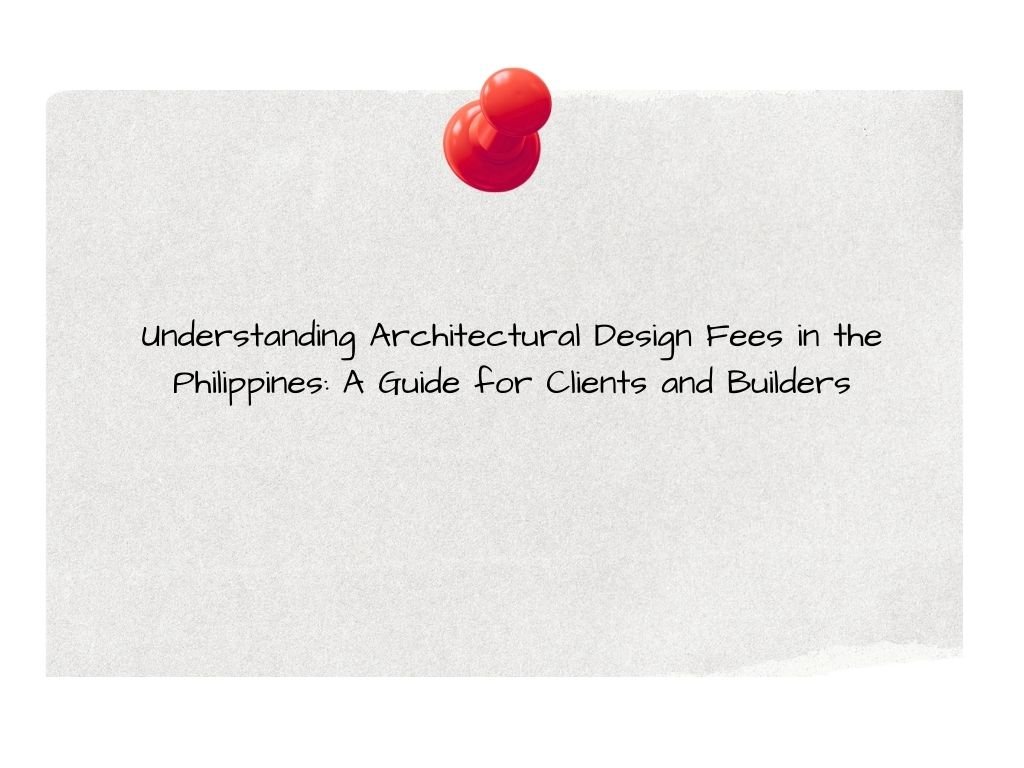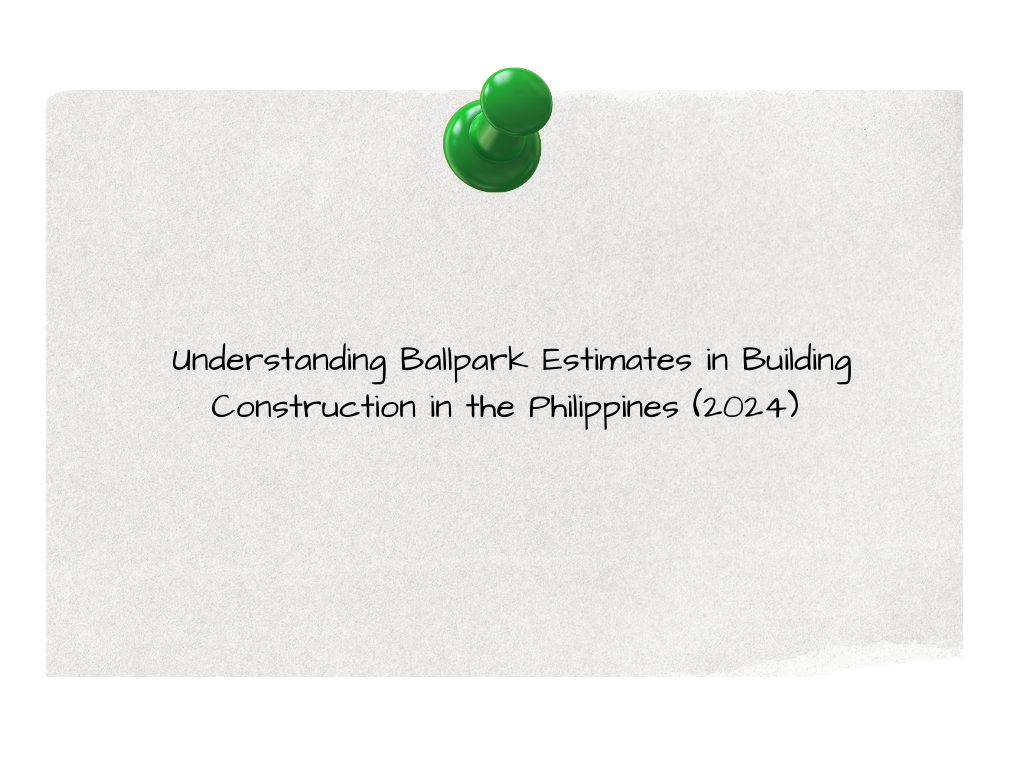Of course, when we talk about a project in the Philippines, one of the most important issues for clients is how much the architect’s fee will be. Architect’s fees could vary greatly on the base of a number of aspects such as the scope of the work, the nature of the project, and the specific services needed. Along the way, we will showcase how architectural service costs are calculated in the Philippines, using the rules of the UAP (United Architects of the Philippines) Document, but we also point out that different projects can have different costs.
The UAP Document and Architectural Fees
UAP 301 (Architectural Services and Fees) are the terms for the “Architectural Services and Fees” document that also serves as a basis on which the Filipino architects are under their professional training and practice. This document draws the standard model of work for image-makers and also provides different fee-scale scenarios. The UAP document should be a necessary guide in making sure both developers and architects are on the same page on what services are entitled and what fees are reasonable.
In the UAP guidelines, the fee structures are sorted out by the construction costs% and the type of project. These fees are from the mundane of single-family houses and from the complex of grand commercial buildings. The regular way to calculate the architect’s fee is to consider the percentage of total construction cost. For example, the architect’s fee in a residential project may vary between 5% and 10%, depending on the project’s size. On the other hand, such fees for the larger commercial or institutional buildings can be even higher.
Factors Influencing Architectural Design Fees
One of the limitations of the UAP Document and the basic framework provides it is the fact that there is no way of setting the fees for architects in the construction industry. Several variables can influence the final amount spent on hiring an architect, and, thus, both clients and architects must develop a mutual understanding of the project requirements and ensure the appropriate communication.
Here are some factors that may affect the fee structure.
1. Nature of the Project
- Residential Projects: In a recent study, it was shown that house designs (examples: single-family- or multi-family-buildings) are generally cheaper than those of commercial or institutional buildings. However, complexity of, for example, green roofs, special materials, or the use of obsolete construction material installation technologies, has been reported to increase costs.
- Commercial Projects: Office buildings, shopping malls and hotels are big investments. They are far more expensive and the costs are supported by various funding systems through the public budget, taxes, and/or future earnings. The process of construction itself is a process in which materials and technologies interplay. The surrounding environment is a very important factor of urban and rural planning. Technologies in the aforementioned fields have been developed to make construction activity more environmental friendly.
- Institutional or Public Projects: Public buildings are architectural design projects which are funded by the public consisting of sub-governmental units mainly zonal and municipal levels which the government presents the money to pay it off later. They usually have tighter timeframes. These types of projects are usually long in duration, and their timeframes are without changes. Public buildings are the most sustainable options for communities. In addition, their construction will be accompanied by the purchase of material which will be beneficial for economy as well.
2. Scope of Work
- Scope of the task is the term used for a project architect has to deal with a certain set of tasks and responsibilities which the architect is expected to fulfill all along the company. These can range from simple design services to more thorough treatment where it includes site definition, project management, permitting, interior design, and post-construction services.
- Full Scope vs. Limited Scope: A full-service architect might be the only one in charge of the entire design and building processes, including the conceptual stage and construction. A limited scope could be only one particular with tasks such as creating plans for the building or getting it approved by the authorities. Obviously, job coverage will be greater with the former and cost will be higher.
3. Project Complexity and Design
- Sustainable architecture, high specific engineering requirements, or architectural styles and types of structures which differ mostly from the normal, shall be the likely cause of more expenditure and will also take longer time.
- Renovation vs. New Construction: The costs or proceeds may differ between the two approaches. Heritage decoration, for instance, can call personnel to demonstrate highly capable skills and individual attention, thus increase the fees.
4. Location of the Project
- A project’s location mainly depends on the price of workforce and materials. A high rise in the urban space such as Manila and Cebu City, are expected to be subjected to the possible higher salary of architects, which is also influenced by the prevailing price of the construction materials and other related materials. On the other hand, rural areas can incur more costs because of transportation and other logistics.
5. Architect’s Experience and Reputation
- Architects who have already been established and who have a strong portfolio, especially those who have had international recognition or have been involved in the implementation of large volume projects may charge higher fees than others. The cornerstones of their know-how and know-why in the area of design complexities are the reasons for compensation of a higher rate.
Fee Structures: A Closer Look
Just as mentioned before, the architects in the Philippines are mostly paid in a percentage of the total building expense which in other words is a suitably efficient way of calculating the fee amount. However, it is crucial to mention that these fees might fluctuate mainly because of the above-mentioned factors.
The following are some of the general guidelines based on the UAP document:
- Residential Projects: The cost may generally be around 5% to 10% of the total construction expenses for Residential Projects. The smaller the size or the simpler the designs in a smaller house or the more complex the house is, the bigger the number of homes of more luxurious living type that are built.
- Commercial Projects: It is six to twelve percent of the construction cost for commercial buildings. The larger and more complicated a building is, the more this fee will rise.
- Projects at Institutions: Institutional projects such as schools, hospitals, and government-owned buildings usually cost around 8% to 12%.
Conclusion
The fees for architectural designing in the Philippines mostly hope on some factors like the project, the scope of work, the intricacy of the design, and the architect’s reputation. While the UAP Document 301 is a general indicator, rates can vary according to the project’s specific needs. It is important for both clients and architects to have a detailed exchange about the project like expectations, deliverables, and the cost in order to reach a successful partnership.
Knowing the influencing components of architectural charges, clients can make better financial plans that ensure them of top-notch, professional designing services matching their preferred taste and appeal.




One thought on “Understanding Architectural Design Fees in the Philippines: A Guide for Clients and Builders”